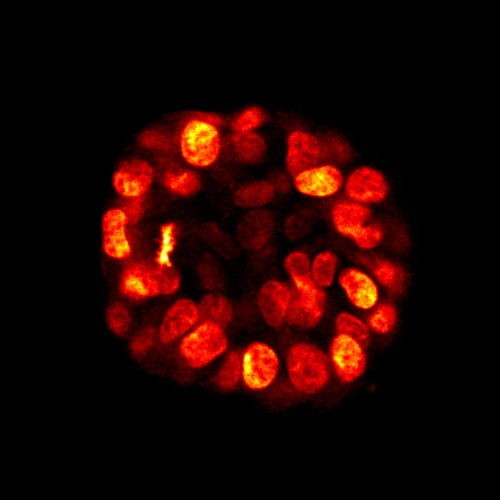You suspect your protein binds to microtubules? That it might stabilize or destabilize these filamentous structures? Then this post is here to help you to find a meaningful assay to validate your assumption.
Tubulin – a major player in cell biology

Tubulin represents one of the major cytoskeleton structures. It plays an important role in cell structure, intracellular transport, and mitosis. In eukaryotic cells, microtubules are assembled from dimers of α-tubulin and β-tubulin which form a filamentous cylinder (Fig 1). While β-tubulin is exposed on the (+) end, α-tubulin is exposed on the (-) end. As filamentous F actin, microtubules can grow on both (+) and (-) ends, although the growth at the (+) end is much more rapid.
In this post, I’d like to concentrate on a method which allows measuring microtuble binding capabilities of proteins of interest. A wide variety of microtubule associated proteins (MAP) have been described. Functions of these proteins include (de)stabilizing microtubules, cross-linking, leading microtubules towards their cellular target locations, and finally facilitating interactions of microtubules with other proteins. One of the best known and described MAP is tau, which forms abnormal aggregates in the nervous tissue of patients suffering from Alzheimer’s disease.

Measuring protein binding to microtubules
The Microtubule Binding Protein Spin-down Assay Kit by Cytoskeleton Inc. (available through tebu-bio in Europe) allows the identification of proteins that will bind to microtubules (MTs) in vitro. The assay relies on the fact that MTs will pellet when centrifuged at 100,000 x g. Therefore, any protein that is associated with the MTs will pellet with them during centrifugation. A simple SDS-PAGE analysis of the supernatant versus pellet fraction will identify if a protein is able to associate with MTs. The assay description given in this manual is for recombinantly expressed “test” proteins, however, the assay can be adapted for cell lysates or in vitro translation products. The kit comes with a positive (MAP fraction) and a negative control (BSA). Typical results obtained with the controls are shown in Fig 2.
Interested in testing your protein on microtubule binding capability? To receive the manual of the kit please contact me below.



